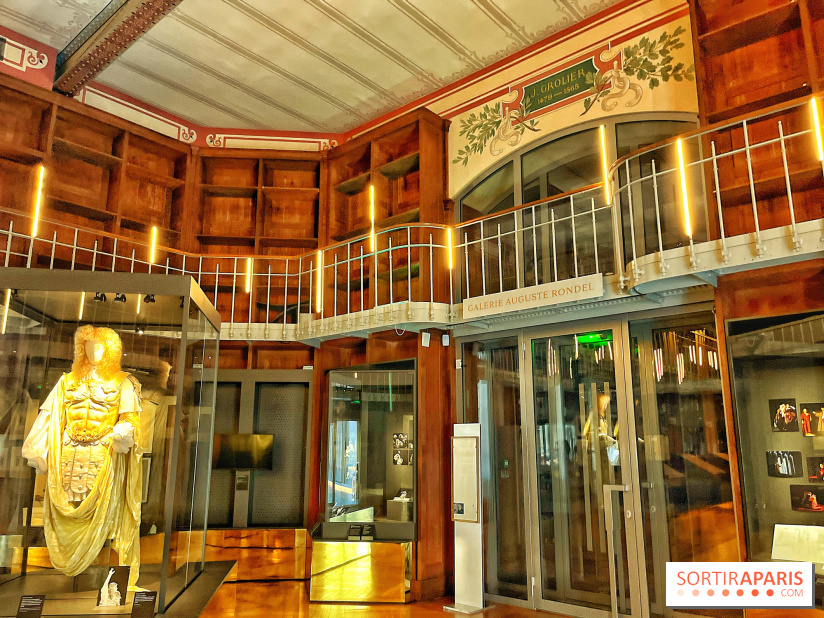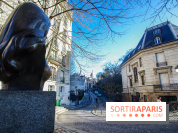BnF's Richelieu site, built in 1721, recently celebrated its 300th anniversary. This advanced age explains its (very) lengthy renovation over the past 10 years. The BnF is now open to all, whereas previously only professionals, students and researchers had the right (and the chance!) to access its fabulous collections. The Oval Room is also freely accessible, with a renewed cultural offer, including for children!
Since 1721, the Palais Mazarin has been home to the Royal Library, with its five departments (Manuscripts, Prints, Titles, Medals and Prints). The collections, built up since the Middle Ages and making it one of the richest in the world, are spread across several hotels (Hôtel de Nevers, Hôtel de Lambert) and galleries (Galerie Neuve, Galerie Mazarine). Under Napoleon III, it was felt that the library needed more space, and Henri Labrouste, architect of the Bibliothèque Sainte-Geneviève, was chosen in 1854 to carry out the work.
In the 1860s, the architect built the sublime Salle Labrouste, in which he played with metal, glass and earthenware and created a magnificent ceiling inspired by Byzantine domes. He was succeeded by a new architect, Jean Louis Pascal, who created the Salle Ovale, the library's second largest room, in the shape of an amphitheatre and topped by a glass roof.
As the centuries went by, it became difficult to house all the writings at Richelieu, which is why the François Mitterrand Library was built in 1996! In total, the Richelieu site covers 58,000 m2 spread over thirteen levels. The Vivienne garden is open to the public, and visitors can discover the architecture of the site on a self-guided tour. New areas, previously closed to visitors, are also accessible, including the Salon Louis XV and Mazarin's bedroom.
For researchers, rooms have been renovated or refurbished, with a set of six reading rooms for specialized departments. The Oval Room, one of the site's best-known reading areas, seats 150 people free of charge. But it's also possible to visit it alone, thanks to a signposted pathway dotted with information. A playful area has been designed for younger visitors, with a virtual fitting room for period costumes.
The new museum showcases a selection of nearly 1,000 treasures from the past, including some of the most incredible from the BnF Richelieu. These include Victor Hugo's Les Misérables manuscripts, the Grand Camée de France and Dagobert's throne, as well as photographs and costumes. Lovers of coins and medals will find the old collections here, and BnF offers a program of temporary exhibitions in the Mansart gallery.
Among the building's listed rooms and galleries is a Rose Bakery café, for a relaxing sweet or savoury break overlooking the new garden, and a boutique-library, offering all BnF editions for purchase.
The Richelieu site is open every day, but the museum is closed on Mondays. You can expect to pay between 8 and 10 euros to visit the museum, with free admission for students and under-26s. For a few euros more, you can combine your ticket with an exhibition, which is more cost-effective. The Pass lecture/culture and the Pass recherche give unlimited access to all BnF's cultural offerings on all its sites.
To get to BnF Richelieu, take line 3 (Bourse) and lines 1, 7 and 14 (Palais-Royal-Musée du Louvre, Pyramides). Disabled people will prefer to enter via 58 rue de Richelieu rather than 5 rue Vivienne.



 The Richelieu Library, historic birthplace of the BNF
The Richelieu Library, historic birthplace of the BNF
The Bibliothèque Richelieu is one of the most beautiful libraries in Paris. Discover it for yourself! [Read more]
Location
BnF - Richelieu site
58 rue de Richelieu
75002 Paris 2
Prices
Salle ovale: Free
Exposition temporaire: €8 - €10
Musée de la BNF: €8 - €10
Billet couplé: €10 - €13
Official website
bnf.tickeasy.com







































